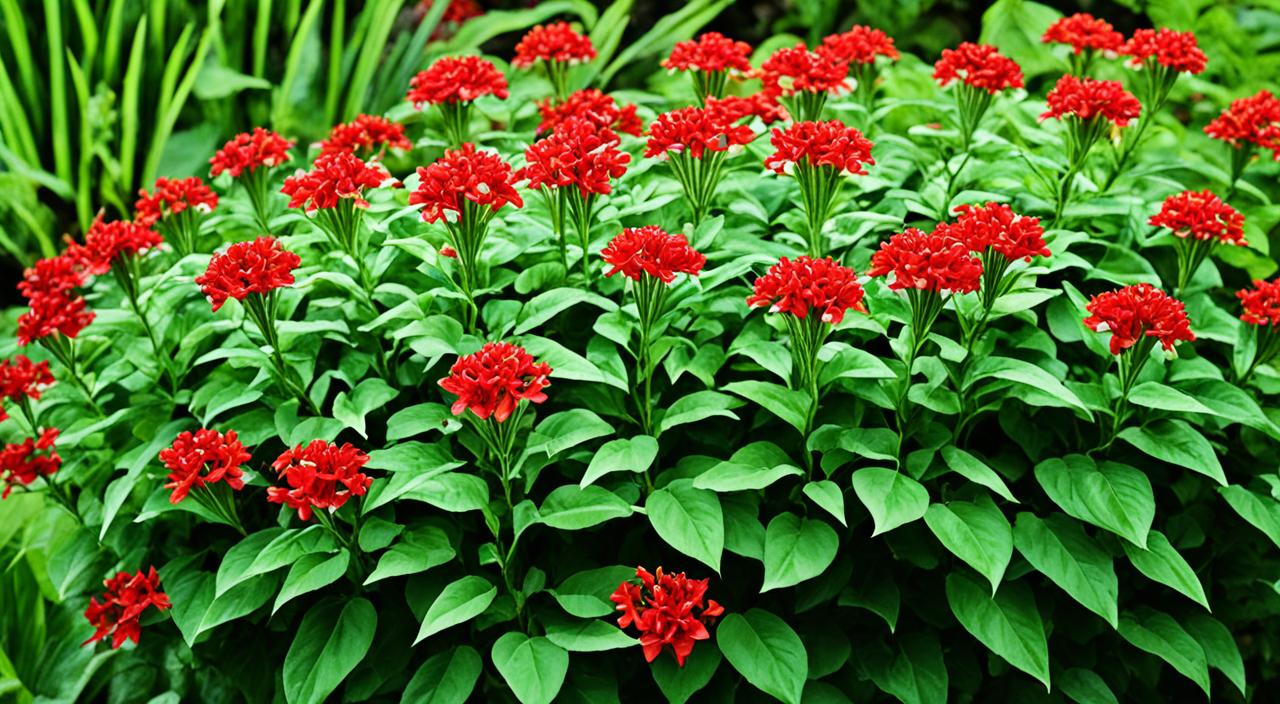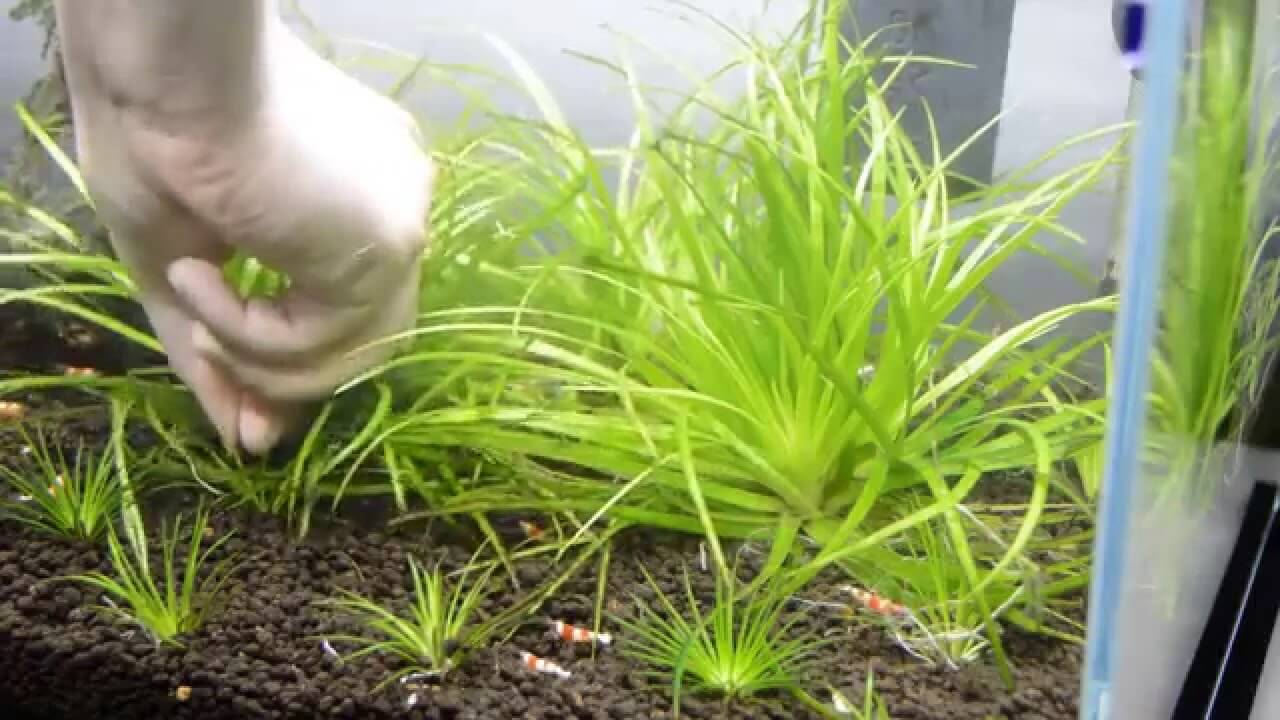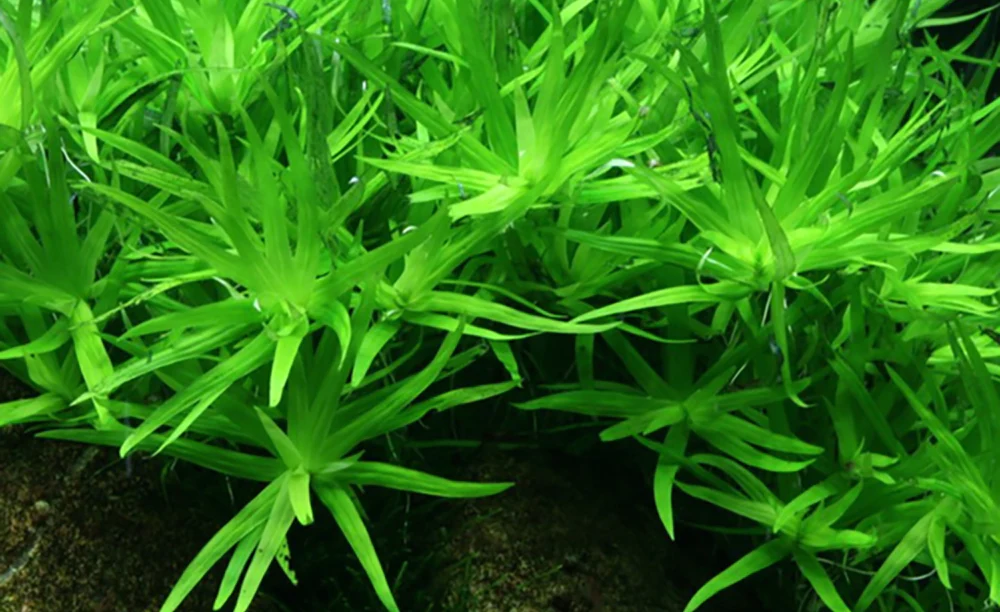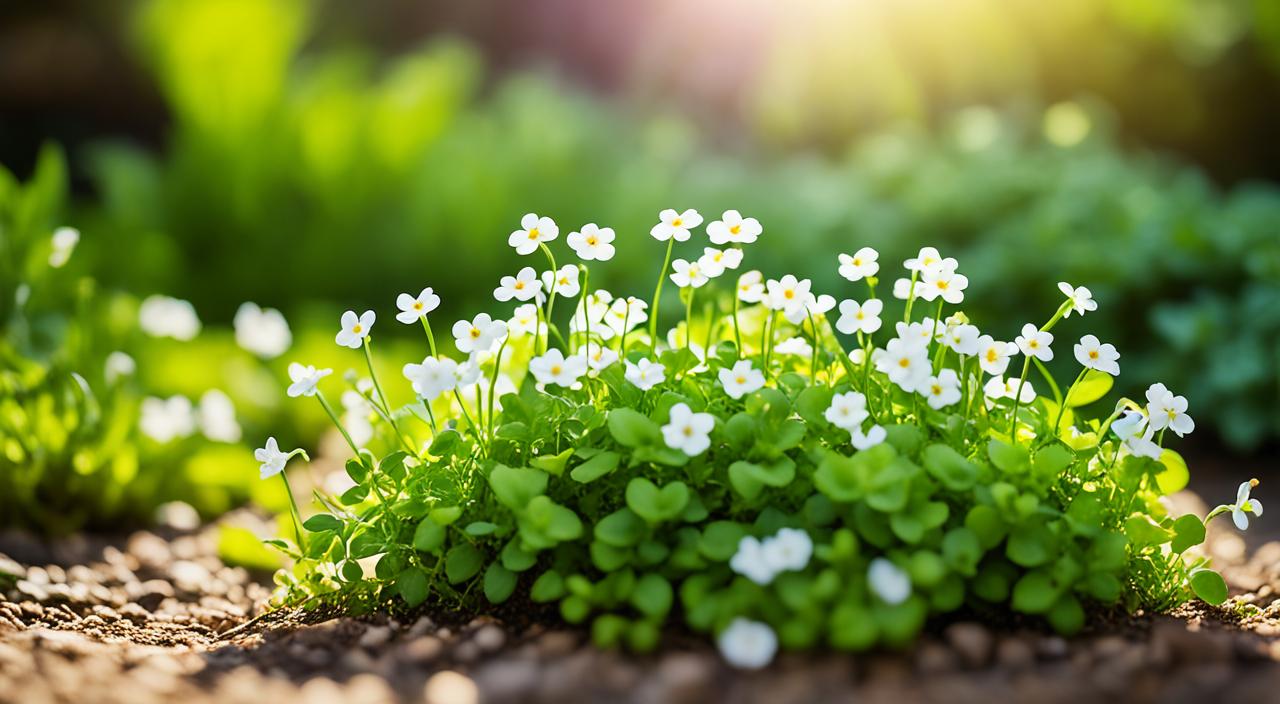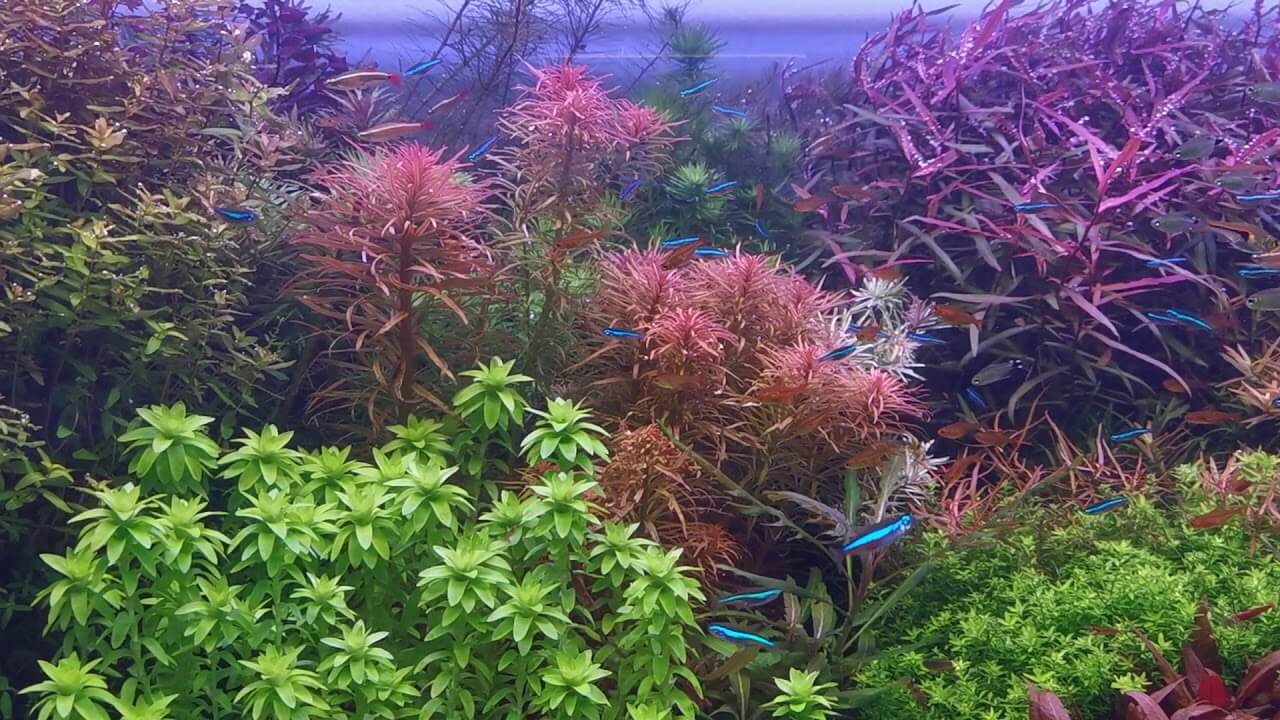G’day, mates! Today, I want to talk to you about Lobelia cardinalis, a stunning aquatic plant that can add a touch of vibrant colour to your freshwater aquarium. As a fan of aquatic plants and freshwater aquascaping, I’m excited to share with you some insights into the care and maintenance of this beautiful plant.
Lobelia cardinalis, also known as the cardinal flower, belongs to the bellflower family (Campanulaceae) and is native to the Americas. Its striking red flowers make it popular among aquarists who want to create a visually appealing underwater landscape. But there’s more to Lobelia cardinalis than just its looks. Let’s dive deeper and explore the origins and habitat, morphological characteristics, placement and lighting requirements, suitable tank mates, feeding and fertilization, CO2 injection, care tips, aquarium maintenance, and health and disease management for this spectacular aquatic plant.
So, if you’re ready to take your freshwater aquascaping to the next level and learn how to care for Lobelia cardinalis, let’s get started!
Key Takeaways:
- Lobelia cardinalis is a vibrant aquatic plant native to the Americas.
- It is famous for its striking red flowers and is commonly used in freshwater aquariums.
- To thrive in an aquarium, the plant requires proper placement, lighting, and care.
- When choosing tank mates, it’s essential to consider the compatibility with Lobelia cardinalis.
- Feeding, fertilization, CO2 injection, and regular maintenance are all essential for the plant’s health and vitality.
Brief Overview Of Lobelia cardinalis
In this section, we will provide a brief overview of Lobelia cardinalis. This stunning aquatic plant, commonly known as a cardinal flower, is popular among aquarists for its vibrant red flowers and striking visual appeal.
Lobelia cardinalis is native to the Americas and can be found in regions such as the eastern United States, southeastern Canada, Mexico, Central America, and southern Colombia. It belongs to the bellflower family (Campanulaceae) and is classified as a perennial herbaceous plant.
Lobelia cardinalis Information Table:
| Attribute | Description |
|---|---|
| 1. Scientific Name: | Lobelia cardinalis |
| 2. Common Names: | Cardinal Flower, Dwarf Cardinal Plant |
| 3. Origin: | North America |
| 4. Height: | 10-30 cm (4-12 inches) |
| 5. Growth Rate: | Moderate |
| 6. Colour: | Bright green leaves with red stems in high light; darker green in lower light. |
| 7. Aquarium Placement: | Midground |
| 8. Water Type: | Freshwater |
| 9. pH: | 6.0-7.5 |
| 10. Care Level: | Easy to moderate |
| 11. Light Requirements: | High light preferred; 50-70 PAR, 6500-7000 Kelvin, for optimal color and growth. |
| 12. CO2 Requirements: | Beneficial but not mandatory; enhances growth and coloration. |
| 13. Temperature: | 18-26°C (64-79°F) |
| 14. Flow Rate: | Low to moderate |
| 15. Propagation: | Cuttings from the top or side shoots |
| 16. Feed Type: | Root tabs and liquid fertilizers are recommended. |
Expanded Light Requirements:
For Lobelia cardinalis, achieving vibrant colouration and healthy growth involves providing adequate lighting. The plant thrives under high light conditions, which can be quantified as follows:
- PAR (Photosynthetically Active Radiation): Ideal PAR levels for Lobelia cardinalis are between 50 to 70. This range supports robust growth and enhances the plant’s bright green colouration and red stems, especially when CO2 is supplemented.
- LUX: While specific LUX requirements are less commonly specified for aquatic plants due to the variability in light penetration and spectrum in water, maintaining a high-intensity lighting environment is crucial. Aim for lighting systems that provide bright, well-distributed light across the aquarium.
- Kelvin Scale: The colour temperature of the light should be between 6500 and 7000 Kelvin to simulate natural daylight conditions, which is ideal for promoting photosynthesis and ensuring the plant’s vibrant appearance.
Adjusting these lighting parameters to meet the plant’s needs can significantly impact its health, growth rate, and colouration, making it a standout feature in any aquascape.
One of the notable features of Lobelia cardinalis is its lance-shaped leaves, which provide an elegant backdrop for its showy flowers. The plant requires high light levels to thrive and display its intense red colouration.
As a freshwater aquarium plant, Lobelia cardinalis adds vibrant colour and visual interest to any tank. Its striking appearance, adaptability to a range of water conditions, and compatibility with other fish and plant species make it a popular choice among aquarists.
| Common Name | Lobelia cardinalis |
|---|---|
| Family | Campanulaceae |
| Native Range | Americas |
| Type | Perennial herbaceous plant |
| Features | Vibrant red flowers, lance-shaped leaves |
| Lighting Requirements | High light levels |
Origins And Habitat
Lobelia cardinalis, also known as the cardinal flower, is native to the Americas and widely distributed across various regions. It can be found in the eastern United States, southeastern Canada, Mexico, Central America, and southern Colombia. The plant thrives in moist environments, particularly in wet open woods, streambanks, swamps, and marshy areas.
The natural habitat of Lobelia cardinalis provides valuable insights into its preferred growing conditions. An aquatic plant requires a suitable aquatic setting, such as freshwater aquariums or carefully constructed aquascapes that emulate its native ecosystem.
Morphological Characteristics
Lobelia cardinalis, with its unique morphological characteristics, stands out among other aquatic plants. The plant showcases lance-shaped leaves and stunning showy red flowers, making it visually appealing in any aquarium. The leaves of Lobelia cardinalis are long and slender, resembling the shape of a lance, while the flowers are vibrant red and add a striking focal point to the tank.
The leaves of Lobelia cardinalis typically grow in a rosette pattern, forming an attractive arrangement around the base of the plant. They have prominent veins and a glossy texture, providing an interesting visual element. Conversely, the flowers grow on tall stems above the foliage, creating a captivating vertical display. The red petals are tubular and often have white or yellow markings, adding further visual interest.
Overall, Lobelia cardinalis possesses distinct features that make it a stunning addition to any freshwater aquarium. Its lance-shaped leaves and vibrant red flowers contribute to its appeal and set it apart from other aquatic plants.
Placement And Lighting
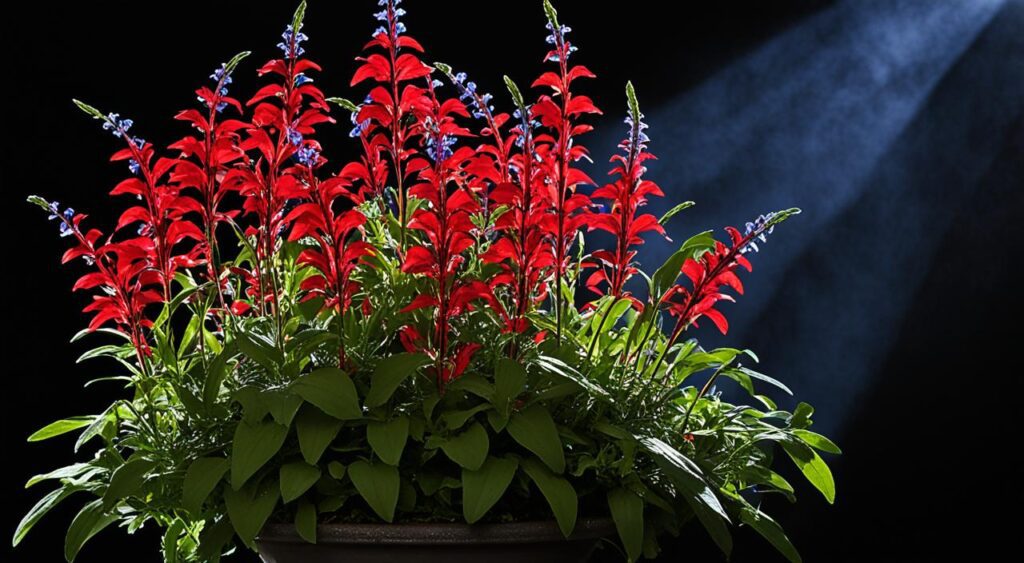
The proper placement and lighting are crucial for the successful cultivation of Lobelia cardinalis in an aquarium. Finding the right spot for this aquatic plant is key to enhancing its visual impact and promoting optimal growth.
Placement: Lobelia cardinalis is best suited for midground placement in an aquarium. Its vibrant red foliage creates a striking contrast against the surrounding plants and decorations. When positioning Lobelia cardinalis, ensure it has enough space to spread and grow without overcrowding. This will allow the plant to showcase its full glory and provide a visually appealing focal point within the tank.
Lighting: Suitable lighting is essential for the healthy development of Lobelia cardinalis. This plant thrives in high-light conditions that mimic its natural habitat. Consider using high-intensity LED lights or other lighting systems that provide bright and balanced illumination throughout the tank. Adequate lighting will support the growth of Lobelia cardinalis and enhance its colouration, making it more vibrant and visually appealing.
What Are Good Tank Mates?
Lobelia cardinalis can thrive in a community aquarium, but it’s essential to choose suitable tank mates to ensure the well-being of all the inhabitants. Some fish species can coexist peacefully with Lobelia cardinalis, while others may pose a risk to the plant or other tank inhabitants. Let’s explore the best tank mates for Lobelia cardinalis and identify fish species to avoid.
Good Tank Mates
When selecting tank mates for Lobelia cardinalis, consider fish species with similar environmental requirements and peaceful temperaments. Here are some good tank mates that are compatible with Lobelia cardinalis:
- Neon Tetras
- Dwarf Gouramis
- Corydoras Catfish
- Otocinclus Catfish
- Bristlenose Plecos
These fish species are known to coexist well with Lobelia cardinalis and can create a harmonious aquarium environment.
Fish Species To Avoid
While Lobelia cardinalis can thrive with particular tank mates, there are fish species that should be avoided due to their incompatible behaviour or potential harm to the plant. Fish species to avoid as tank mates for Lobelia cardinalis include:
- Aggressive Cichlids
- Large Predatory Fish
- Tiger Barbs
- Red-Tailed Sharks
- Goldfish
These fish species may uproot or damage the Lobelia cardinalis plant, exhibit aggressive behaviour, or have incompatible care requirements. It’s important to research potential tank mates’ specific needs and temperaments before adding them to the aquarium.
| Fish Species | Compatibility |
|---|---|
| Neon Tetras | Good |
| Dwarf Gouramis | Good |
| Corydoras Catfish | Good |
| Otocinclus Catfish | Good |
| Bristlenose Plecos | Good |
| Aggressive Cichlids | Avoid |
| Large Predatory Fish | Avoid |
| Tiger Barbs | Avoid |
| Red-Tailed Sharks | Avoid |
| Goldfish | Avoid |
Feeding (Fertilization)
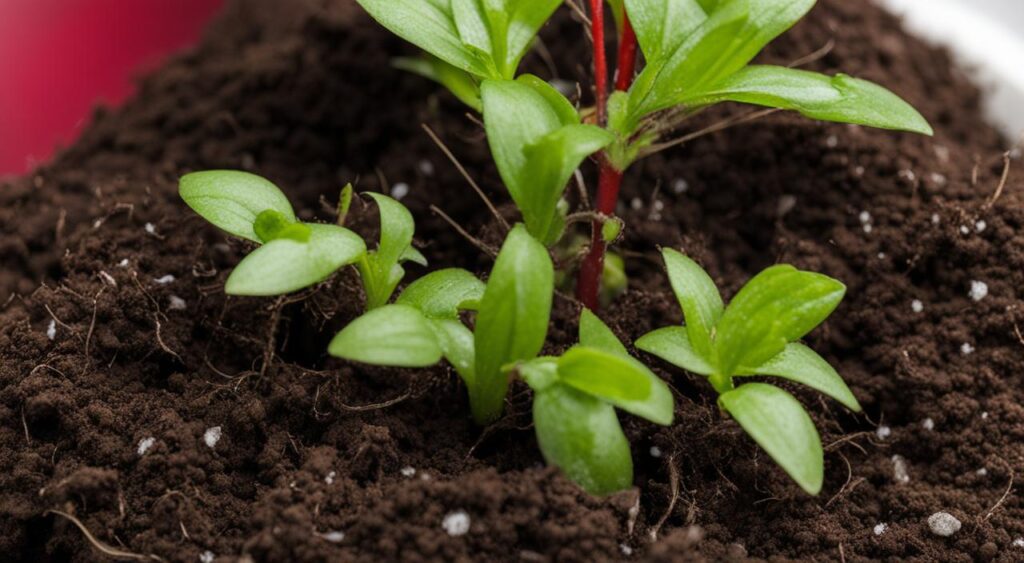
Feeding Lobelia cardinalis and providing the proper fertilization is crucial for its healthy growth and overall well-being in the aquarium. You can support its vibrant foliage and robust development by ensuring the plant receives nutrients. In this section, I will discuss the feeding and fertilization methods beneficial for Lobelia cardinalis.
How Much And How Often To Feed
Lobelia cardinalis is a nutrient-demanding plant that requires regular feeding to thrive. When feeding this aquatic plant, following a comprehensive fertilization routine is recommended. Here are some key points to consider:
- Use a high-quality liquid fertilizer formulated explicitly for aquatic plants. These fertilizers contain essential macro and micronutrients that Lobelia cardinalis needs for healthy growth.
- Administer the liquid fertilizer according to the manufacturer’s instructions. Typically, adding the fertilizer once or twice a week is recommended, depending on the intensity of your aquarium’s lighting and the plant’s specific needs.
- Dose the fertilizer in small amounts to prevent nutrient overload. Overfertilization can lead to algae growth and other imbalances in the aquarium. It’s better to start with a lower dosage and gradually increase, if necessary, based on the plant’s response.
- Observe the growth and overall health of your Lobelia cardinalis. If you notice slow growth, pale or discoloured leaves, or any signs of nutrient deficiency, consider adjusting the fertilization dosage or frequency.
- Regularly monitor the water parameters of your aquarium, including nitrate, phosphate, and iron levels. Maintaining optimal nutrient levels will support the healthy development of Lobelia cardinalis.
Feeding Lobelia cardinalis requires a balanced approach to ensure the plant receives adequate nutrients without causing imbalances in the aquarium ecosystem. By carefully monitoring and adjusting the fertilization routine, you can provide optimal nutrition for your Lobelia cardinalis and help it flourish in your aquatic landscape.
CO2 Injection
Types
Carbon dioxide supplementation is essential for the optimal growth and development of Lobelia cardinalis in an aquarium. CO2 injection gives the plant the necessary carbon source to support photosynthesis and enhance health. In this section, we will explore the importance of carbon dioxide supplementation for Lobelia cardinalis and discuss different types of CO2 injection methods that can be used to promote its growth.
Several types of CO2 injection systems are available for aquarium enthusiasts, each with advantages and considerations. These methods include:
- Pressurized CO2 Systems: Pressurized CO2 systems are often considered the most effective and efficient method for injecting carbon dioxide into the aquarium. These systems typically consist of a CO2 cylinder, regulator, solenoid valve, and diffuser. The pressurized CO2 is released into the aquarium water through the diffuser, allowing plants like Lobelia cardinalis to absorb it.
- DIY CO2 Systems: DIY CO2 systems are a cost-effective alternative to pressurized CO2 systems. They involve creating a homemade CO2 generator using yeast, sugar, and water, which produces carbon dioxide as a byproduct of fermentation. The generated CO2 is then diffused into the aquarium water. While DIY CO2 systems can be effective, they require regular maintenance to ensure consistent CO2 production.
- Liquid CO2 Supplements: Liquid CO2 supplements, also known as liquid carbon, are an alternative option for CO2 supplementation. These products contain liquid carbon-based compounds that release carbon dioxide when added to the aquarium. While liquid CO2 supplements can provide some benefits, they generally have a milder effect than pressurized CO2 systems.
When choosing a CO2 injection method for your Lobelia cardinalis aquarium, it’s essential to consider factors such as the size of your tank, the requirements of other aquatic plants and animals, and your budget. Consulting with experienced aquarists or seeking professional advice can help you make an informed decision.
Care
Proper care is essential for maintaining the health and vitality of Lobelia cardinalis in an aquarium. To ensure the well-being of these aquatic plants, it is essential to pay attention to various factors such as planted tank parameters, water quality, filtration, and flow requirements.
Planted Tank Parameters
Creating the right environment for Lobelia cardinalis starts with choosing the appropriate substrate. Use a nutrient-rich substrate that promotes root development and nourishes the plant. Aim for a temperature range of 72-82°F (22-28°C) and maintain a slightly acidic to neutral pH of 6.0-7.5. Moderate to high lighting conditions will support the plant’s growth and vibrant colouration.
Water Quality
Water quality is crucial for the overall health of Lobelia cardinalis. Monitoring parameters such as ammonia, nitrite, and nitrate levels is essential to prevent water contamination. The recommended water hardness for Lobelia cardinalis is on the softer side, with a range of 2-12 dGH. Conducting regular water changes and maintaining stable water conditions will help keep the plant healthy.
Filtration
An efficient filtration system is vital for maintaining water clarity and reducing waste buildup in the aquarium. Use mechanical, biological, and chemical filtration methods to ensure optimal water quality. Regular cleaning and maintenance of the filter will help prevent any blockages and ensure its effectiveness.
Flow
Lobelia cardinalis thrives in environments with moderate water flow. Aim for gentle to moderate water movement in the aquarium to mimic the plant’s natural habitat. This can be achieved by positioning the filter outlets strategically and using flow-control devices. Avoid strong water currents that may damage or uproot the plant’s delicate roots.
Aquarium Maintenance
Testing Water Conditions
Regular testing of water conditions is essential for maintaining a healthy environment for Lobelia cardinalis in your aquarium. It helps to ensure that the water parameters are within the optimal range for the plant’s growth and overall well-being. By monitoring and adjusting the water conditions as needed, you can provide the ideal environment for Lobelia cardinalis to thrive.
Measuring key parameters such as pH, temperature, ammonia, nitrite, and nitrate levels is essential when testing the water. These parameters can indicate the overall water quality and potential issues affecting the plant’s health. Regular testing, at least once a week, will allow you to catch any problems early and take appropriate corrective actions.
How To Set Up Your Aquarium Tank
The proper setup of your aquarium tank is crucial for the growth of Lobelia cardinalis. Here are some steps to follow when setting up your tank:
- Start by preparing the substrate. Use a nutrient-rich substrate that will provide essential nutrients for the plant’s roots.
- Add hardscape elements like rocks or driftwood to create an aesthetically pleasing aquascape. These elements can also provide additional hiding places for fish and other tank inhabitants.
- Fill the tank with water and add a water conditioner to remove any chlorine or other harmful substances from the tap water.
- Install the aquarium heater and thermometer to ensure stable water temperature, as Lobelia cardinalis prefers warmer water conditions.
- Set up a filtration system to maintain water clarity and remove any impurities. A suitable filter will help to keep the water parameters stable and provide a healthy environment for the plant.
- Finally, add Lobelia cardinalis to the tank, ensuring it is correctly planted in the substrate and has enough room to grow.
These steps will help you create an ideal aquarium environment for Lobelia cardinalis.
Propagation Methods
Propagation of Lobelia cardinalis allows you to increase your plant population and create a lush and vibrant aquarium. There are several methods you can use to propagate Lobelia cardinalis:
- Division: Gently separate the plant into smaller sections, ensuring each section has attached roots. Plant the divided sections in suitable aquarium areas to encourage new growth.
- Stem Cuttings: Cut a healthy stem from the parent plant and remove the lower leaves. Plant the cutting in the substrate, ensuring at least one node is buried. Over time, the cutting will develop roots and start growing as a new plant.
- Adventitious Shoots: Some varieties of Lobelia cardinalis produce small plantlets on their stems, known as adventitious shoots. These shoots can be carefully removed and planted on the substrate to establish new plants.
Using these propagation methods, you can expand your Lobelia cardinalis collection and create a lush and well-established aquarium.
Health And Disease
Monitoring the health of Lobelia cardinalis is essential to ensure its well-being and longevity in the aquarium. In this section, I will discuss the signs of good health in Lobelia cardinalis and the signs of poor health and joint health issues that the plant may face. Additionally, I will explore the treatment options for these health issues and discuss the common plant pests that may affect Lobelia cardinalis.
Signs Of Good Health
When Lobelia cardinalis is in good health, it exhibits vibrant colouration and vigorous growth. The leaves should be lush and green, and the plant should produce new ones regularly. Healthy Lobelia cardinalis will also have sturdy stems and well-developed roots. These signs indicate that the plant is receiving adequate nutrition and is thriving in its environment.
Signs Of Poor Health
Several signs indicate poor health in Lobelia cardinalis. Discoloration of the leaves, such as yellowing or browning, can indicate nutrient deficiency or improper lighting. Wilting or drooping leaves may indicate dehydration, inadequate water quality, or root issues. Reduced growth or stunted development can result from insufficient nutrients or CO2 levels. It is essential to closely monitor the plant for these signs and take action promptly to prevent further decline.
Common Health Issues And Treatment
Lobelia cardinalis is susceptible to specific health issues affecting its overall well-being. Some common health issues include nutrient deficiency, CO2 deficiency, algae overgrowth, and root rot.
Nutrient deficiency can be addressed by providing a balanced fertilizer formulated explicitly for aquarium plants. CO2 deficiency can be remedied by implementing a CO2 injection system or liquid carbon supplements. Algae overgrowth can be controlled through proper maintenance, including regular water changes and algae removal. Root rot can be prevented by ensuring adequate substrate conditions and avoiding overwatering. In cases of severe root rot, it may be necessary to trim affected roots and replant the plant.
Plant Pests
Lobelia cardinalis is generally resistant to pests, but a few common plant pests may affect its health. These pests can include snails, aphids, and fungal infections. Snails can be controlled through manual removal or the introduction of snail-eating fish. Aphids can be treated with insecticidal soaps or other appropriate treatments labelled for aquarium use. Fungal infections can be prevented by maintaining proper water quality and ensuring good water circulation.
It is essential to regularly inspect Lobelia cardinalis for any signs of pest infestation and take appropriate measures to prevent their spread.
Image
Summary
This article explores the fascinating world of Lobelia cardinalis, commonly known as a cardinal flower. This vibrant aquatic plant is famous for freshwater aquascaping thanks to its striking red flowers and unique morphological characteristics.
We began by discussing the origins and habitat of Lobelia cardinalis, highlighting its native range across the Americas. This plant thrives in moist environments such as streambanks and marshy areas from the eastern United States to Mexico and Central America.
We then delved into the plant’s morphological characteristics, describing its lance-shaped leaves and showy red flowers, which add a splash of colour and visual interest to aquariums. We provided insights into the proper placement and lighting requirements to ensure its successful cultivation and tips on choosing suitable tank mates for a harmonious aquatic community.
Feeding and fertilization methods and the importance of CO2 injection were also discussed in detail, providing valuable information on the care requirements for Lobelia cardinalis. We then explored proper aquarium maintenance, including water testing, tank setup, and propagation methods. Lastly, we covered the health and disease aspects, including signs of good health, joint health issues, and plant pests that may affect Lobelia cardinalis.
By summarizing these key points, we have provided a comprehensive overview of Lobelia cardinalis and its significant role in freshwater aquascaping. Whether you are a beginner or an experienced aquarist, understanding this remarkable aquatic plant’s care needs and characteristics will help you create a captivating and thriving aquarium.
FAQ
What is Lobelia cardinalis?
Lobelia cardinalis, also known as cardinal flower, is a vibrant aquatic plant commonly used in freshwater aquariums. It is a perennial herbaceous plant that belongs to the bellflower family (Campanulaceae).
Where is Lobelia cardinalis native to?
Lobelia cardinalis is native to the Americas, including the eastern United States, southeastern Canada, Mexico, Central America, and northern Colombia in South America.
What are the morphological characteristics of Lobelia cardinalis?
Lobelia cardinalis has lance-shaped leaves and showy red flowers that make it visually appealing. It has unique features that set it apart from other aquatic plants.
Where should I place Lobelia cardinalis in my aquarium?
Lobelia cardinalis is commonly placed in the midground of the aquarium to create a striking visual display. Adequate spacing and positioning are essential for its successful growth.
What lighting does Lobelia cardinalis require?
Lobelia cardinalis requires high light levels to support its growth and vibrant coloration. Proper lighting is essential for its successful cultivation in the aquarium.
What are good tank mates for Lobelia cardinalis?
Good tank mates for Lobelia cardinalis include peaceful fish species that coexist well with the plant. It’s important to choose compatible tank mates to ensure the well-being of all aquarium inhabitants.
How much and how often should I feed Lobelia cardinalis?
Lobelia cardinalis should be fed regularly to ensure its nutritional needs are met. The amount and frequency of feeding may vary, so it’s important to monitor the plant’s growth and adjust accordingly.
How can I supplement CO2 for Lobelia cardinalis?
CO2 supplementation can benefit the growth and development of Lobelia cardinalis in an aquarium. Different methods, such as CO2 injection, can be used to promote optimal growth.
How do I care for Lobelia cardinalis in my aquarium?
Proper care is essential for maintaining the health and vitality of Lobelia cardinalis. This includes providing suitable tank parameters, maintaining water quality, ensuring proper filtration, and meeting the plant’s flow requirements.
What is involved in aquarium maintenance for Lobelia cardinalis?
Regular maintenance is crucial for the long-term success of Lobelia cardinalis. This includes testing water conditions, setting up the aquarium tank appropriately, and utilizing propagation methods to expand the plant population.
How can I monitor the health of Lobelia cardinalis in my aquarium?
Monitoring the health of Lobelia cardinalis involves observing signs of good health, such as vibrant coloration and strong growth. It’s also important to be aware of the signs of poor health, common health issues, and potential plant pests that may affect the plant.
What are the key points about Lobelia cardinalis?
The key points about Lobelia cardinalis include its origins, habitat, morphological characteristics, placement and lighting requirements, suitable tank mates, feeding and fertilization methods, CO2 supplementation, care tips, aquarium maintenance, health and disease considerations, and more.

